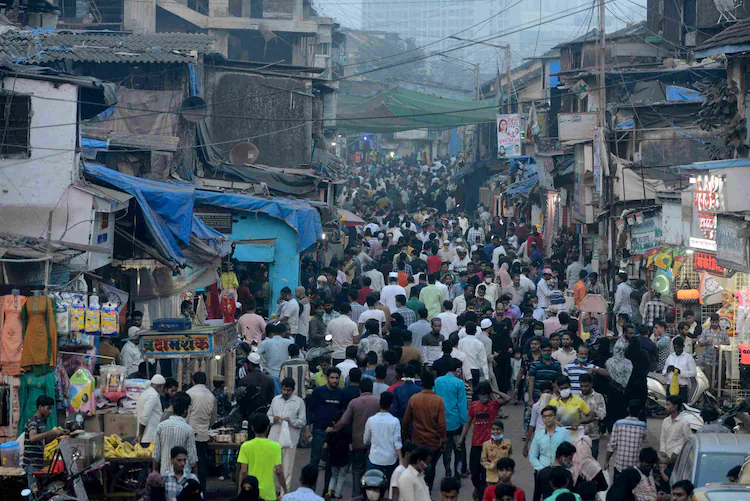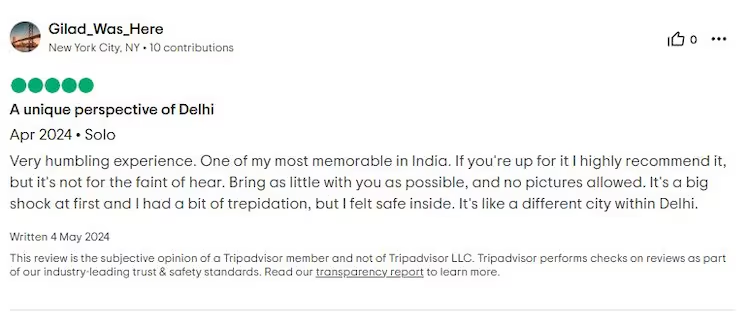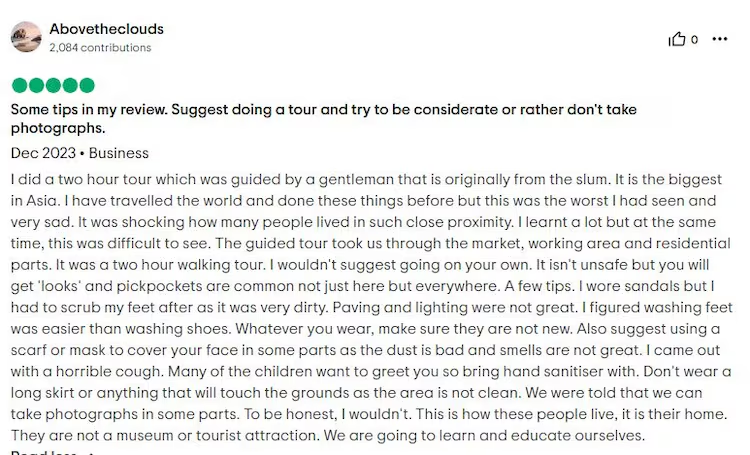
Why not? "Slumdog Millionaire" was bound for success. It complemented the foreign viewpoint on india and other developing nations flawlessly. Many people found interest in the tale of rags to riches mixed with an indian love story. But not until 2009, when Tapeshwar Vishwakarma, a slum-dwellers welfare organization spokesman, launched a slander complaint, did some people start to notice problems with the movie. As a result of his claims that the film's bleak portrayal of slum inhabitants infringed on their human rights, the "foreign gaze" was acknowledged more widely.
Almost 16 years later, a new wave of tourism has emerged that aims to showcase India's poverty and its beauty in a way that may not be very fulfilling for Indians. But for some, it might be "shocking," "eye-opening," "unsafe," and yet it can also help you "appreciate fully what you have in life"—especially if you're not from India.
Enter Slum Tourism
Slum tourism or poverty tourism, as it is commonly called on the Internet, is the practice of traveling to 'impoverished urban areas or slums' as a tourist attraction, usually in developing nations. It falls under the category of "dark tourism," in which travelers go to places associated with tragedy and death.
Guided tours that highlight the everyday routines, living circumstances, and difficulties experienced by the locals are a part of this kind of tourism.
The idea itself is divisive and not new; proponents claim it increases awareness of poverty and brings in money for the neighborhood, while detractors claim it takes advantage of the locals and transforms their suffering into a show for tourists with more money.
A New York Times story (dated 1884) claims that since the 1880s, members of the wealthier elite have been visiting slums, either to learn more about the life of the people or to gather support. But these days, there's a sharp increase in demand for these trips.
This is because several travel websites provide tours of slums in big cities like Bengaluru, mumbai, Delhi, and even Kolkata, frequently for entertainment purposes.
'It started for a good cause'
In 2003, a few young people who lived in Rio de Janeiro's favelas gave british citizen chris Way a tour of the impoverished area.
Chris, who had previously lived in india for a while, had become friends with krishna Pujari, a rice farmer's son from Heranjalu in the state of karnataka in South india, with whom he discussed his plan to carry out "something similar in Mumbai."
The two founded Reality Tours and Travel two years later, in august 2005, but they didn't go on their first trip with an Australian woman in Dharavi until january 2006.
 Krishna told the india Herald, "It wasn't easy to convince people to come and visit a slum: people were skeptical of flyers being handed out on the street trying to bring them to a slum, and hotels wouldn't work with us because we wouldn't pay commission."
Krishna told the india Herald, "It wasn't easy to convince people to come and visit a slum: people were skeptical of flyers being handed out on the street trying to bring them to a slum, and hotels wouldn't work with us because we wouldn't pay commission."According to Krishna, the goal of Reality Tours and Travel has always been "to give back to the community." For this reason, they donate 80% of their earnings, either as work possibilities or as lessons for young people, to the "community." Additionally, they want the world to realize how hard-working the residents of Dharavi are.
 Krishna acknowledges that this is true, but notes that not all indian slum tour companies are created equal or have the same goals. Similar businesses are currently emerging, and without understanding the purpose of these trips, third-party travel agency applications like GetYourGuide, Viator, Agoda, and TripAdvisor are marketing them.
Krishna acknowledges that this is true, but notes that not all indian slum tour companies are created equal or have the same goals. Similar businesses are currently emerging, and without understanding the purpose of these trips, third-party travel agency applications like GetYourGuide, Viator, Agoda, and TripAdvisor are marketing them.‘People often come here for photos’
Tara Katims, a US TikToker and influencer, caused a lot of controversy recently—March 2024, to be exact—when she posted videos of herself on a "slum tour" through Dharavi.
Tara said in the video that she took a "slum tour" in mumbai and had a great time. On social media, the video drew a lot of criticism, particularly from indians who were shocked by the "slum tour."
‘I would recommend bringing a sanitizer with you’

You may purchase these slum excursions online or engage a local guide to give you the tours for an additional fee. The cost of each participant is estimated to be between Rs 1,500 and 2,000.
These slum excursions have received mixed reviews. The two to three hours spent touring the residences may be fascinating to some people but not to others.
After reading through some of the evaluations, we decided to find out how much these slum tours appreciated the people living there and how much they didn't.

 For example, a review of the Dharavi slum tour on Tripadvisor by user @abovetheclouds comments, "It was shocking how many people lived in such close proximity." I gained a lot of knowledge, but it was also challenging to understand. The walking tour lasted for two hours. I would advise against travelling alone. It's not dangerous, although you will get "looks," and pickpockets are a regular sight everywhere, not just here.
For example, a review of the Dharavi slum tour on Tripadvisor by user @abovetheclouds comments, "It was shocking how many people lived in such close proximity." I gained a lot of knowledge, but it was also challenging to understand. The walking tour lasted for two hours. I would advise against travelling alone. It's not dangerous, although you will get "looks," and pickpockets are a regular sight everywhere, not just here. In addition, the user offered some advice to anyone considering going on a slum tour. To "scrub the feet after the tour as it was very dirty," the user, for example, urged everyone to wear sandals.
In addition, the user offered some advice to anyone considering going on a slum tour. To "scrub the feet after the tour as it was very dirty," the user, for example, urged everyone to wear sandals.



 click and follow Indiaherald WhatsApp channel
click and follow Indiaherald WhatsApp channel